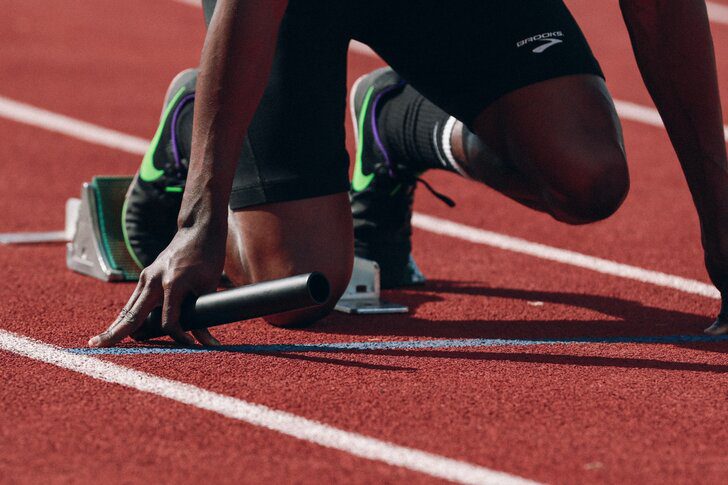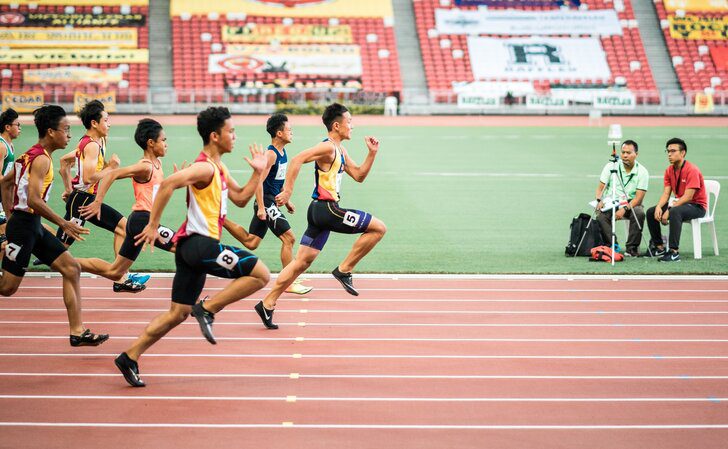
Study Suggests Risk of Overuse Injuries Reduces if You Lean Forward Less

It’s a common misconception that running is an activity that primarily occurs and affects the lower parts of the body (below the waist). But in reality, that’s not the case. Researchers at the University of Colorado, Denver, have proven that the angle at which a runner’s torso leans while running can determine their style of sprinting and the likelihood of injuries.
When a person leans forward while running, their feet hit the ground much harder, and this can bring sudden jerks and stress to the hips, knees, legs, and feet. Eventually, this increases the probability of overuse injuries.

Braden Collum/Unsplash | A study has proven that when a person leans forward while running, their feet hit the ground much harder, and this can bring stress to the hips, knees, legs, and feet
The Study
Human Movement Science, the journal in which this study has appeared, examines runners’ trunk flexion (the angle at which runners hold their torso as they run). Researchers have discovered that even the smallest changes in the angle of trunk flexion can have an adverse effect on the runner’s motion as well as the lower limbs and their impact as they hit the ground while running.
As an experiment, the researchers called on recreational runners with no injuries ageing from 18 to 23 years, who were asked to run short 15 second trials at 3 meters per second. The runners went on to perform these trials first at their natural angles of trunk flexion, and then at angles which the researchers specified. The aim was to hold runners’ torsos at distinct angles without disrupting the ability to run or making them feel uncomfortable.
The researchers placed plastic dowels behind each runner’s head on a treadmill, and this forced them to lean slightly forward in order to avoid bumping into it. The lower the dowel was placed, the farther the runner had to lean forward. The higher the object was placed, the straighter was the runner’s trunk flexion.

SwapnIl Dwivedi/Unsplash | Researchers have discovered that even the smallest changes in the angle of trunk flexion can have an adverse effect on the runner’s motion
Observation
Initially, it was expected that the farther you lean, the farther your leg would extend in order to keep your body from falling. Due to this, the stride length and frequency would increase. However, in reality, the observations were quite the opposite. The stride length got shorter, and the frequency of the stride increased.
In running, it’s all about efficiency and energy diversification. The more inefficient the runner is, the less they are able to spend their energy properly, clearly leading them into a situation of overuse and stress injuries.

Jonathan Chng/Unsplash | In running, it’s all about efficiency and energy diversification. The less a runner leans, the lesser are the chances of stressing out limbs
Analysis and Optimization of Runs
As mentioned above, the farther the runner leans forward while running, the harder his/her legs hit the ground. Thus, it’s critical for the runner to focus on the lean. If the lean is too forward, a muscle imbalance is created which can cause severe injury.
Running is not just a lower-body experience; it affects the entire body. Although the trunk flexion point is an important aspect of a runner’s form, there are several other factors such as diet and running shoes that have a major impact as well. Doctors encourage runners to try different postures, and find one that’s highly efficient and best suited for them in the long run.
More in Uncategorized
-
`
Carrie Underwood’s Husband & Kids: Celebrity Lives Revealed
Carrie Underwood’s husband, Mike Fisher, has been by her side for nearly 15 years. The country music star, 41, and the...
February 7, 2025 -
`
Struggling With Panic Attack? Try This Easy Hack to Stop It
Panic attacks are overwhelming, intense, and can hit you out of nowhere. If you have ever experienced one, you know it...
February 1, 2025 -
`
Why Pamela Anderson Stopped Wearing Makeup
Pamela Anderson, the iconic blond beauty of “Baywatch” fame, has made headlines once again. But this time, it is not about...
January 26, 2025 -
`
Top 6 Easy-To-Start Side Hustles You Must Consider in 2025
Voiceover Work Do you think you have a great voice? Put it to work! Voiceover gigs are among the most flexible...
January 16, 2025 -
`
Shadow Work Explained: What It Is and Why It’s Life-Changing
Shadow work is a transformative practice that delves into the hidden parts of ourselves—those traits, emotions, and memories buried deep in...
January 2, 2025 -
`
Sarah Paulson Wants People to Take Kim Kardashian “Seriously” as an Actress
Sarah Paulson, one of Hollywood’s most celebrated actresses, has made headlines for her unwavering support of Kim Kardashian’s burgeoning acting career....
December 24, 2024 -
`
Can Foreigners Start a Business in the Philippines?
The Philippines is a vibrant economic hub in Southeast Asia, offering lucrative opportunities for entrepreneurs. But can foreigners open up a...
December 19, 2024 -
`
6 Practical Tips to Manage Your Temper as a Parent
Managing anger while disciplining children can be one of the most difficult tasks for parents. Emotions can run high when kids...
December 12, 2024 -
`
Should I Invest in Bitcoin After Its Massive Rally in 2024?
Bitcoin’s price has skyrocketed in 2024, leaving many wondering, should I invest now? After a tough crypto winter, the digital currency...
December 6, 2024















You must be logged in to post a comment Login